
Mary I, also known as Mary Tudor, and as "Bloody Mary" by her Protestant opponents, was Queen of England and Ireland from July 1553 and Queen of Spain and the Habsburg dominions as the wife of King Philip II from January 1556 until her death in 1558. She is best known for her vigorous attempt to reverse the English Reformation, which had begun during the reign of her father, King Henry VIII. Her attempt to restore to the Church the property confiscated in the previous two reigns was largely thwarted by Parliament, but during her five-year reign, Mary had over 280 religious dissenters burned at the stake in the Marian persecutions.
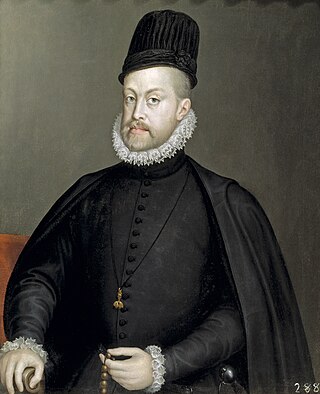
Philip II, also known as Philip the Prudent, was King of Spain from 1556, King of Portugal from 1580, and King of Naples and Sicily from 1554 until his death in 1598. He was also jure uxoris King of England and Ireland from his marriage to Queen Mary I in 1554 until her death in 1558. He was also Duke of Milan from 1540. From 1555, he was Lord of the Seventeen Provinces of the Netherlands.

Mary Tudor was an English princess who was briefly Queen of France as the third wife of King Louis XII. Louis was more than 30 years her senior. Mary was the fifth child of Henry VII of England and Elizabeth of York, and the youngest to survive infancy.
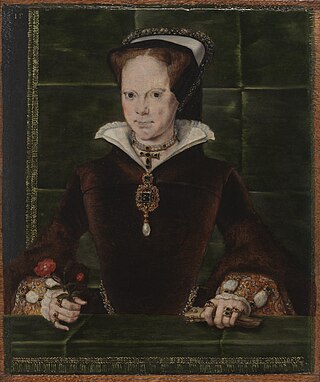
Hans Eworth was a Flemish painter active in England in the mid-16th century. Along with other exiled Flemings, he made a career in Tudor London, painting allegorical images as well as portraits of the gentry and nobility. About 40 paintings are now attributed to Eworth, among them portraits of Mary I and Elizabeth I. Eworth also executed decorative commissions for Elizabeth's Office of the Revels in the early 1570s.
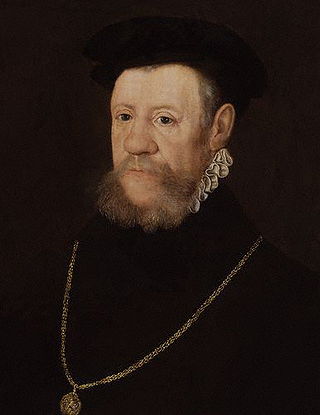
Henry Fitzalan, 12th Earl of ArundelKG was an English nobleman, who over his long life assumed a prominent place at the court of all the later Tudor sovereigns, probably the only person to do so.

Joanna of Austria was Princess of Portugal by marriage to João Manuel, Prince of Portugal. She served as regent of Spain to her brother Philip II during his trips to England to marry Mary I from 1554 to 1556, and 1556 to 1559. She was the mother of King Sebastian of Portugal.
Margaret Stanley, Countess of Derby was the only surviving daughter of Henry Clifford, 2nd Earl of Cumberland and Lady Eleanor Brandon. Her maternal grandparents were Charles Brandon, 1st Duke of Suffolk and Mary Tudor, Queen of France. Mary was the third daughter of King Henry VII of England and Elizabeth of York.
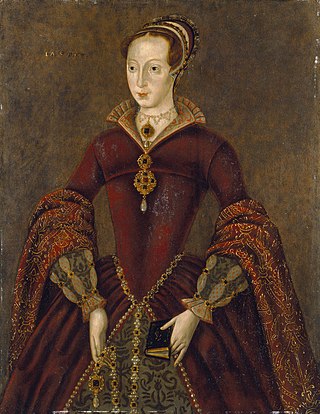
Lady Jane Grey, also known as Lady Jane Dudley after her marriage and as the "Nine Days' Queen", was an English noblewoman who claimed the throne of England and Ireland from 10 to 19 July 1553.

Edward Courtenay, 1st Earl of Devon was an English nobleman during the rule of the Tudor dynasty. Born into a family with close royal connections, he was at various times considered a possible match for the two daughters of Henry VIII, both of whom became queens regnant of England. He was a second cousin to Edward VI, Mary I and Elizabeth I through King Edward IV.
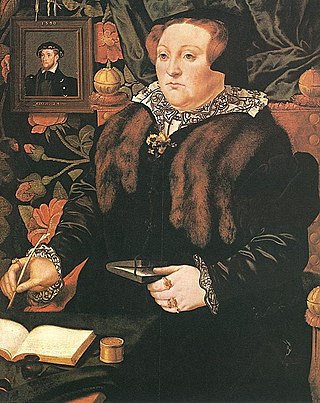
Mary Fiennes, Baroness Dacre was the daughter of George Neville, 5th Baron Bergavenny by his third wife, Lady Mary Stafford, youngest daughter of Edward Stafford, 3rd Duke of Buckingham.

Michael Sittow, also known as Master Michiel, Michel Sittow, Michiel, Miguel, and several other variants, was a painter from Tallinn (Reval), Livonia who was trained in the tradition of Early Netherlandish painting. For most of his life, Sittow worked as a court portrait painter, for Isabella of Castile and her Habsburg relatives in Spain and the Netherlands, and other prominent royal houses. He is considered one of the most important Netherlandish painters of the era.

The artists of the Tudor court are the painters and limners engaged by the monarchs of England's Tudor dynasty and their courtiers between 1485 and 1603, from the reign of Henry VII to the death of Elizabeth I.
Events from the year 1554 in art.

The portraiture of Queen Elizabeth I (1533–1603) spans the evolution of English royal portraits in the early modern period (1400/1500-1800), from the earliest representations of simple likenesses to the later complex imagery used to convey the power and aspirations of the state, as well as of the monarch at its head.

The La Peregrina pearl is one of the most famous pearls in the world. Owned originally by the Spanish monarchs, its history spans almost 500 years and recently belonged to actress Elizabeth Taylor. The jewel is now in private ownership.

Isabella of Portugal was the empress consort of her husband Charles V, Holy Roman Emperor, King of Spain, Archduke of Austria, and Duke of Burgundy. She was Queen of Spain and Germany, and Lady of the Netherlands from 10 March 1526 until her death in 1539, and became Holy Roman Empress and Queen of Italy in February 1530. She acted as regent of Spain during her husband's long absences.

The "Streatham" portrait is an oil painting on panel from the 1590s believed to be a later copy of a woodcut of the English noblewoman Lady Jane Grey from 1580. It shows a three-quarter-length depiction of a young woman in Tudor-period dress holding a prayer book, with the faded inscription "Lady Jayne" or "Lady Iayne" in the upper-left corner. It is in poor condition and damaged, as if it has been attacked. As of January 2015 the portrait is in Room 3 of the National Portrait Gallery in London.

An inventory of the jewels of Mary I of England, known as Princess Mary or the Lady Mary in the years 1542 to 1546, was kept by her lady in waiting Mary Finch. The manuscript is now held by the British Library. It was published by Frederic Madden in 1831. Some pieces are listed twice. Two surviving drawings feature a ribbon with the inscription, "MI LADI PRINSIS". The British Library also has an inventory of the jewels she inherited on coming to the throne in 1553.
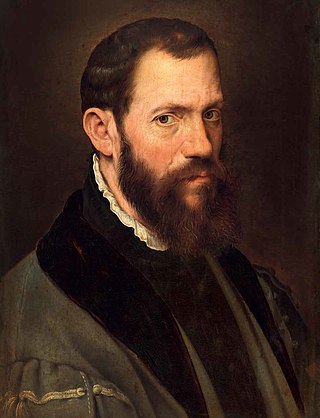
Jacopo da Trezzo was an Italian Renaissance sculptor of medals and jeweller, who after beginning his career in Milan moved to employment by the Spanish Habsburgs in 1554. He spent the rest of his career working for the Spanish court, beginning by visiting England in 1554–55 during the marriage of Philip II of Spain and Mary I of England, which lasted from 1554 to her death in 1558.

Mary I of England (1516–1558) and Philip of Spain married at Winchester Cathedral on Wednesday 25 July 1554.


















